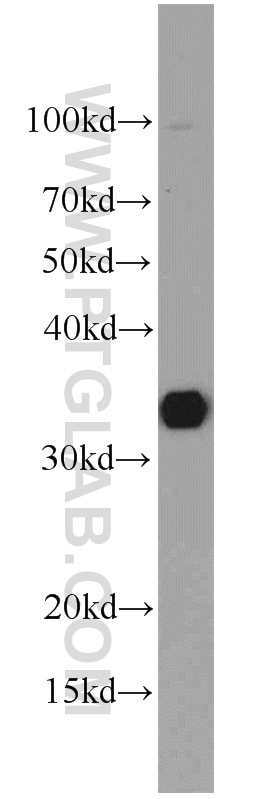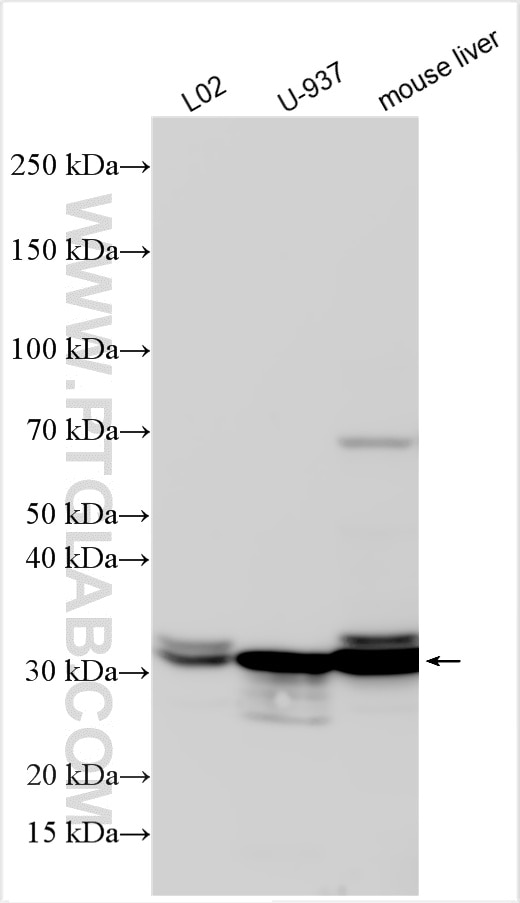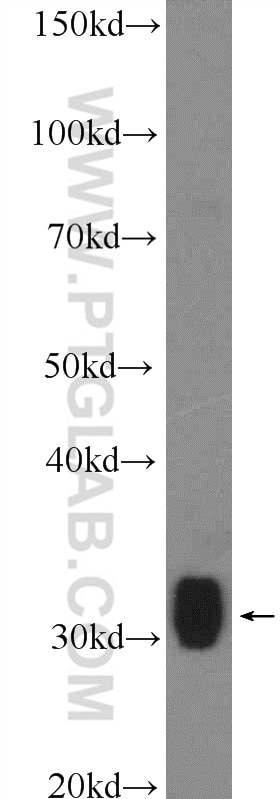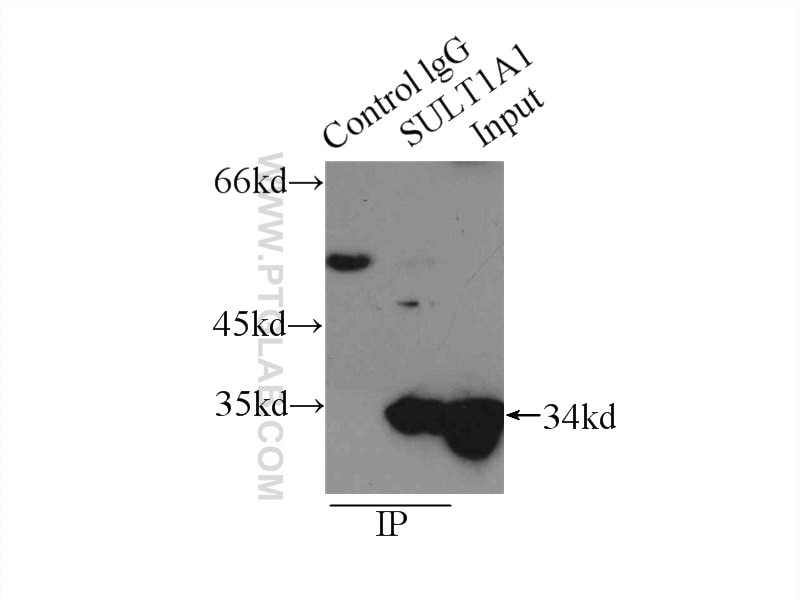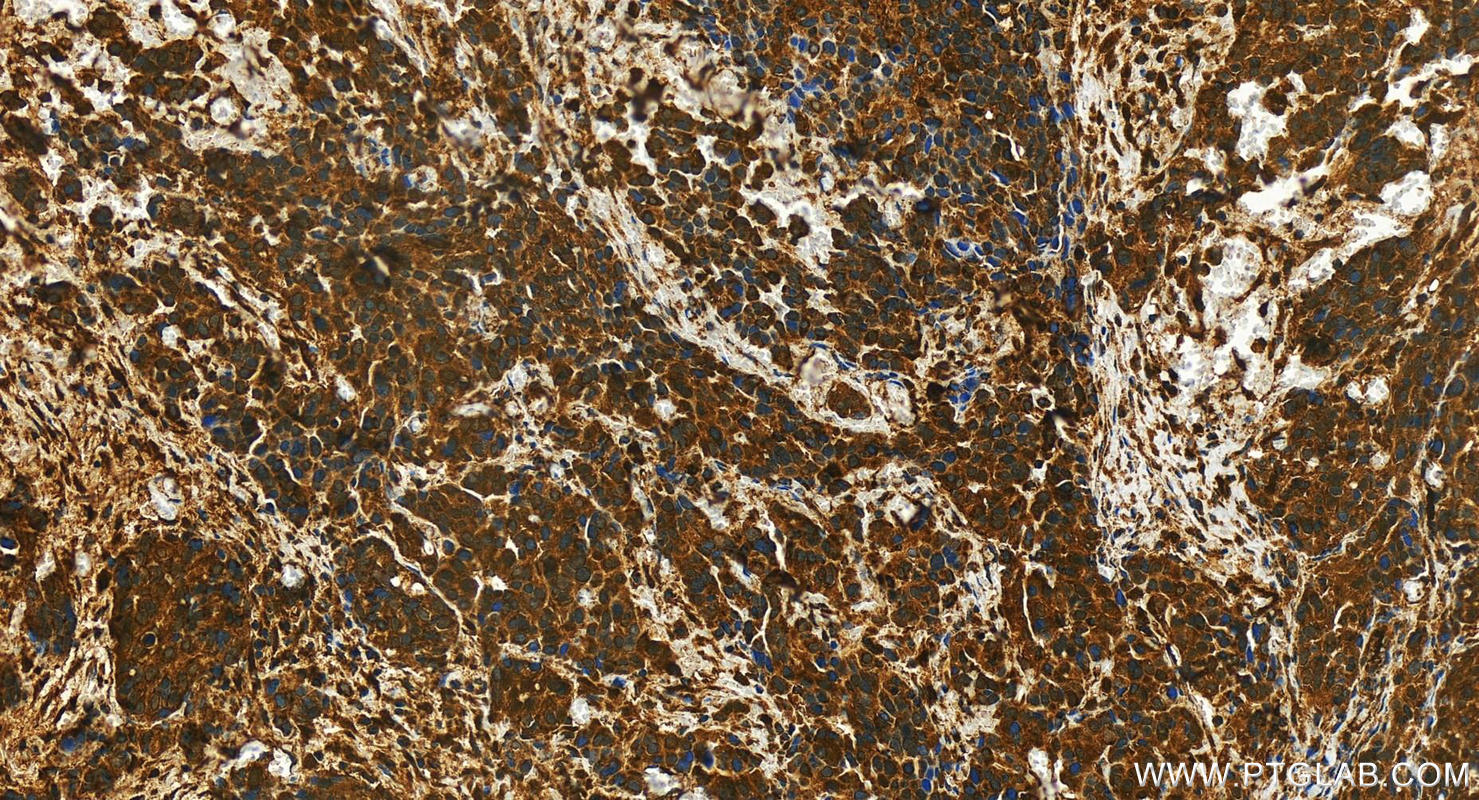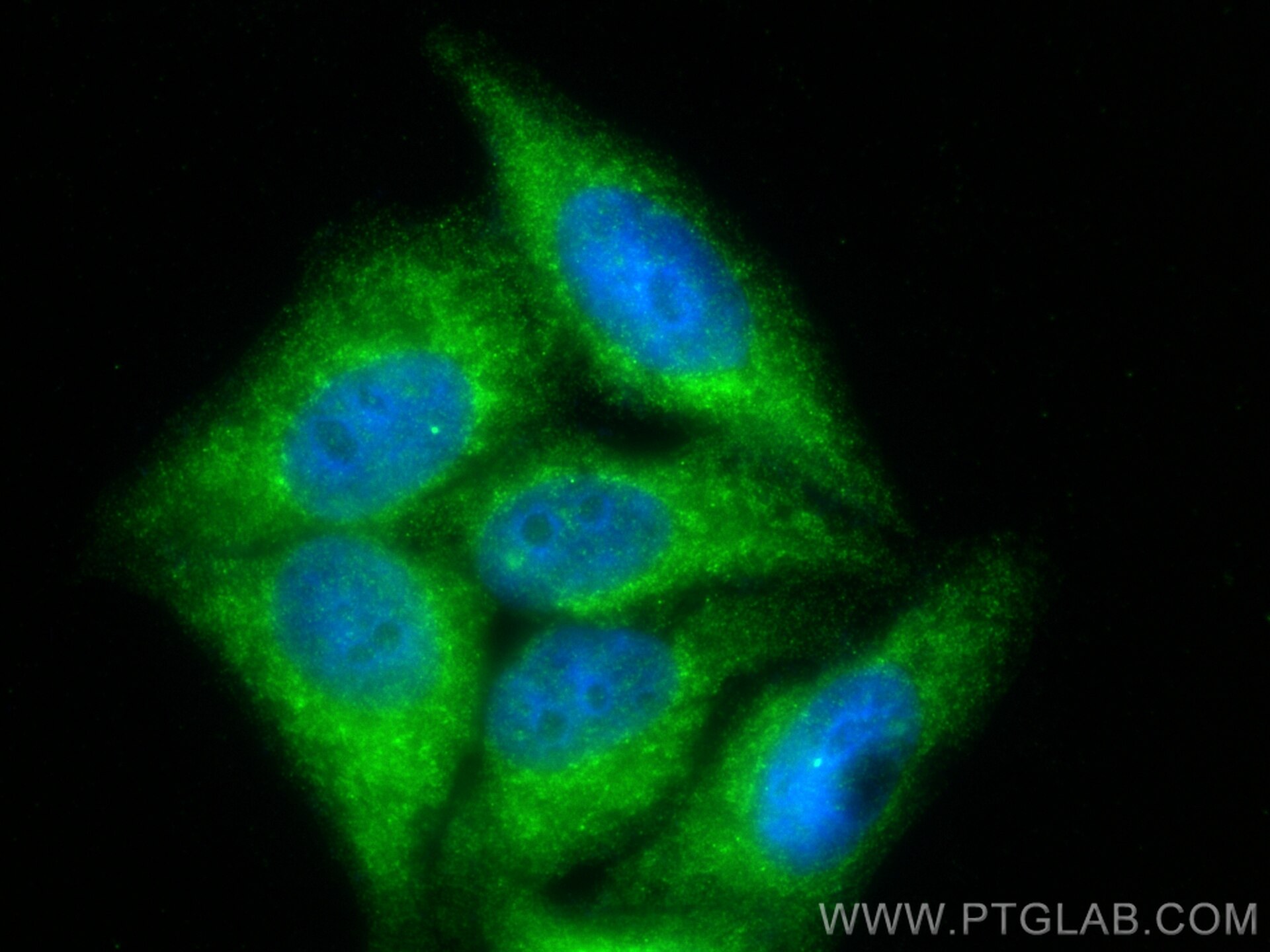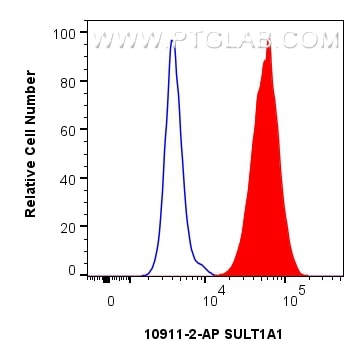Anticorps Polyclonal de lapin anti-SULT1A1
SULT1A1 Polyclonal Antibody for WB, IHC, IF/ICC, IP, ELISA
Hôte / Isotype
Lapin / IgG
Réactivité testée
Humain, rat, souris
Applications
WB, IHC, IF/ICC, IP, ELISA
Conjugaison
Non conjugué
N° de cat : 10911-2-AP
Synonymes
Galerie de données de validation
Applications testées
| Résultats positifs en WB | cellules L02, cellules U-937, tissu hépatique de souris |
| Résultats positifs en IP | tissu hépatique de souris |
| Résultats positifs en IHC | human ovary cancer tissue, il est suggéré de démasquer l'antigène avec un tampon de TE buffer pH 9.0; (*) À défaut, 'le démasquage de l'antigène peut être 'effectué avec un tampon citrate pH 6,0. |
| Résultats positifs en IF/ICC | cellules HepG2, |
| Résultats positifs en FC (Intra) | cellules HepG2, |
Dilution recommandée
| Application | Dilution |
|---|---|
| Western Blot (WB) | WB : 1:1000-1:6000 |
| Immunoprécipitation (IP) | IP : 0.5-4.0 ug for 1.0-3.0 mg of total protein lysate |
| Immunohistochimie (IHC) | IHC : 1:200-1:800 |
| Immunofluorescence (IF)/ICC | IF/ICC : 1:200-1:800 |
| Flow Cytometry (FC) (INTRA) | FC (INTRA) : 0.25 ug per 10^6 cells in a 100 µl suspension |
| It is recommended that this reagent should be titrated in each testing system to obtain optimal results. | |
| Sample-dependent, check data in validation data gallery | |
Applications publiées
| WB | See 7 publications below |
| IHC | See 4 publications below |
Informations sur le produit
10911-2-AP cible SULT1A1 dans les applications de WB, IHC, IF/ICC, IP, ELISA et montre une réactivité avec des échantillons Humain, rat, souris
| Réactivité | Humain, rat, souris |
| Réactivité citée | rat, Humain, souris |
| Hôte / Isotype | Lapin / IgG |
| Clonalité | Polyclonal |
| Type | Anticorps |
| Immunogène | SULT1A1 Protéine recombinante Ag1344 |
| Nom complet | sulfotransferase family, cytosolic, 1A, phenol-preferring, member 1 |
| Masse moléculaire calculée | 34 kDa |
| Poids moléculaire observé | 34 kDa |
| Numéro d’acquisition GenBank | BC000923 |
| Symbole du gène | SULT1A1 |
| Identification du gène (NCBI) | 6817 |
| Conjugaison | Non conjugué |
| Forme | Liquide |
| Méthode de purification | Purification par affinité contre l'antigène |
| Tampon de stockage | PBS with 0.02% sodium azide and 50% glycerol |
| Conditions de stockage | Stocker à -20°C. Stable pendant un an après l'expédition. L'aliquotage n'est pas nécessaire pour le stockage à -20oC Les 20ul contiennent 0,1% de BSA. |
Informations générales
SULT1A1, also named as ST1A1, P-PST 1, ST1A3, Ts-PST, P-PST 1, STP and STP1, belongs to the sulfotransferase 1 family. It catalyzes the sulfate conjugation of catecholamines, phenolic drugs and neurotransmitters. SULT1A1 is also responsible for the sulfation and activation of minoxidil. It mediates the metabolic activation of carcinogenic N-hydroxyarylamines to DNA binding products and could so participate as modulating factor of cancer risk. SULT1A1 is one of two phenol sulfotransferases with thermostable enzyme activity.
Protocole
| Product Specific Protocols | |
|---|---|
| WB protocol for SULT1A1 antibody 10911-2-AP | Download protocol |
| IHC protocol for SULT1A1 antibody 10911-2-AP | Download protocol |
| IF protocol for SULT1A1 antibody 10911-2-AP | Download protocol |
| IP protocol for SULT1A1 antibody 10911-2-AP | Download protocol |
| Standard Protocols | |
|---|---|
| Click here to view our Standard Protocols |
Publications
| Species | Application | Title |
|---|---|---|
Oxid Med Cell Longev Correlation of Reactive Oxygen Species Levels with Resveratrol Sensitivities of Anaplastic Thyroid Cancer Cells. | ||
Biochem Pharmacol Identification of metabolic pattern and bioactive form of resveratrol in human medulloblastoma cells. | ||
FEBS J Distinct sulfonation activities in resveratrol-sensitive and resveratrol-insensitive human glioblastoma cells. | ||
Drug Metab Dispos Sulfotransferase 4A1 (SULT4A1) increases its expression in mouse neurons as they mature. | ||
J Gastroenterol Differential gene expression in normal esophagus and Barrett's esophagus. | ||
PLoS One Metabolic patterns and biotransformation activities of resveratrol in human glioblastoma cells: relevance with therapeutic efficacies. |
